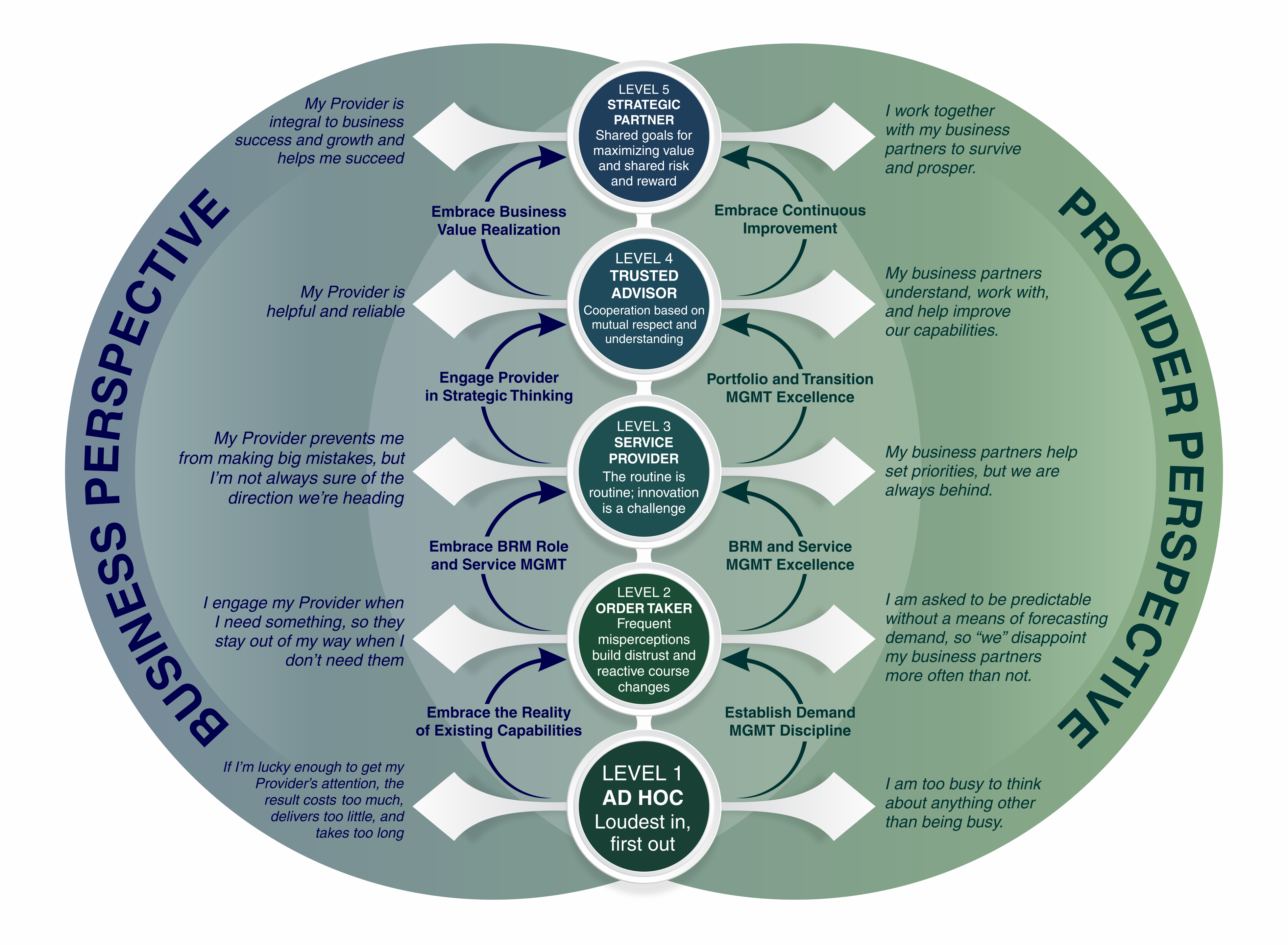4 Quick Steps to Get Your Development Dollars Approved
“How do I get my training approved?”
“Do you have a business case for training?”
“How do I get training approved when my expense budget is being cut?”
Common questions this time of year. To make things easier, below is a quick list that you can use when submitting your requests for training, conferences, and the like.
Before launching into the list, though, it’s critical to shift your mindset to one of value. (Thankfully, we are BRMs, so this is easy).
Training is not an expense. Training is an investment. When our organizations invest money, they expect to see some type of improvement—a change that outweighs the cost of the investment. A change that makes the post-investment world better than the pre-investment world. Just like any other investment consideration.
Now, the four steps:
Know where you are (and own it).
The BRM Competency Model does a great job of lining out what excellence in a business relationship manager looks like, but very few BRMs take the time to perform a self-assessment using the tool at the bottom of the page. (Check out the hyperlink—seriously, it’s right there!) Schedule some time and reflect. Consider your performance and note where you are. Want to do a deeper dive, and really know how you perform? Make it a team exercise and rank one another. Ask your business partners for their opinions so you can create a BRM 360.

© Business Relationship Management Institute
The Business Relationship Maturity Model – This is a great tool to determine relationship health and maturity level. Again, use the assessment at the bottom of the page. Even better, use it as a team. Are you all at the same level? Different levels? What’s working? Use the tools to determine where you have opportunities to grow.
Know where you want to go (and the value in getting there).
Once you’ve completed your assessments, look at where you are and consider where you want to go. What’s the long-term goal? If you reach that goal, what changes for the enterprise? What changes for your team? Those changes are value dials you can impact with your development plans.
Know the right investments (and be an investment partner).
By now, you should have some idea of opportunities that can be addressed. Design a plan that clearly calls out the gaps and proposes a value-focused program to address them.
Generally, training alone will not take you from point A to point B. Instead, design a program that includes reading, training, experiences, collaborative/partnership work, etc. It takes longer, but you’ll learn more that way.
People naturally want to invest in things they see others investing in. Make yourself an attractive investment by visibly investing in yourself.
Investments are a curious thing—people naturally want to invest in things they see others investing in. Make yourself an attractive investment by visibly investing in yourself.
Be the investment.
Training approved and attended does not equate to value for your organization—or your career. Value comes with change. It comes with improvement.
Be the investment. Plan well, and execute against your plan. Measure the results, all the while watching for value leakage.
It’s all too common for all the investment value work to go into planning (such as a business case) when we’re trying to get the funds approved. Once approved, the value management on the back end of an investment rarely sees the benefits of a focused, deliberate approach.
This is an opportunity to show what solid value management practices can do, especially for investments—which is to say, you.
Be the investment. Plan well, and execute against your plan. Measure the results and watch for value leakage—opportunities to utilize what you learn in training, but choose to pass over because habits are hard to break and talking about change is exciting but actually changing is difficult.
When we get right down to it, organizations have very few expenses. Instead, they have an enormous portfolio of investments that live somewhere in the “expense budget.” When it comes to your career, be the investment.
When you do so with the help of BRM tools to manage value, you’ll find that getting training approved isn’t a problem at all.
Starla Borges is a business leader with over 25 years of experience, including over 15 years of accountability for account management and business relationship management functions for both private and Fortune 1000 firms. Starla’s work in business relationship management has been largely focused on business transition management and value management program creation.
Starla holds the BRMP® certification, CBRM® certification, a master certification in business analysis, and has earned a master’s degree in strategic leadership from Black Hills State University. A previously syndicated writer, she will publish her first book, Organizational Athleticism, in late 2016.
